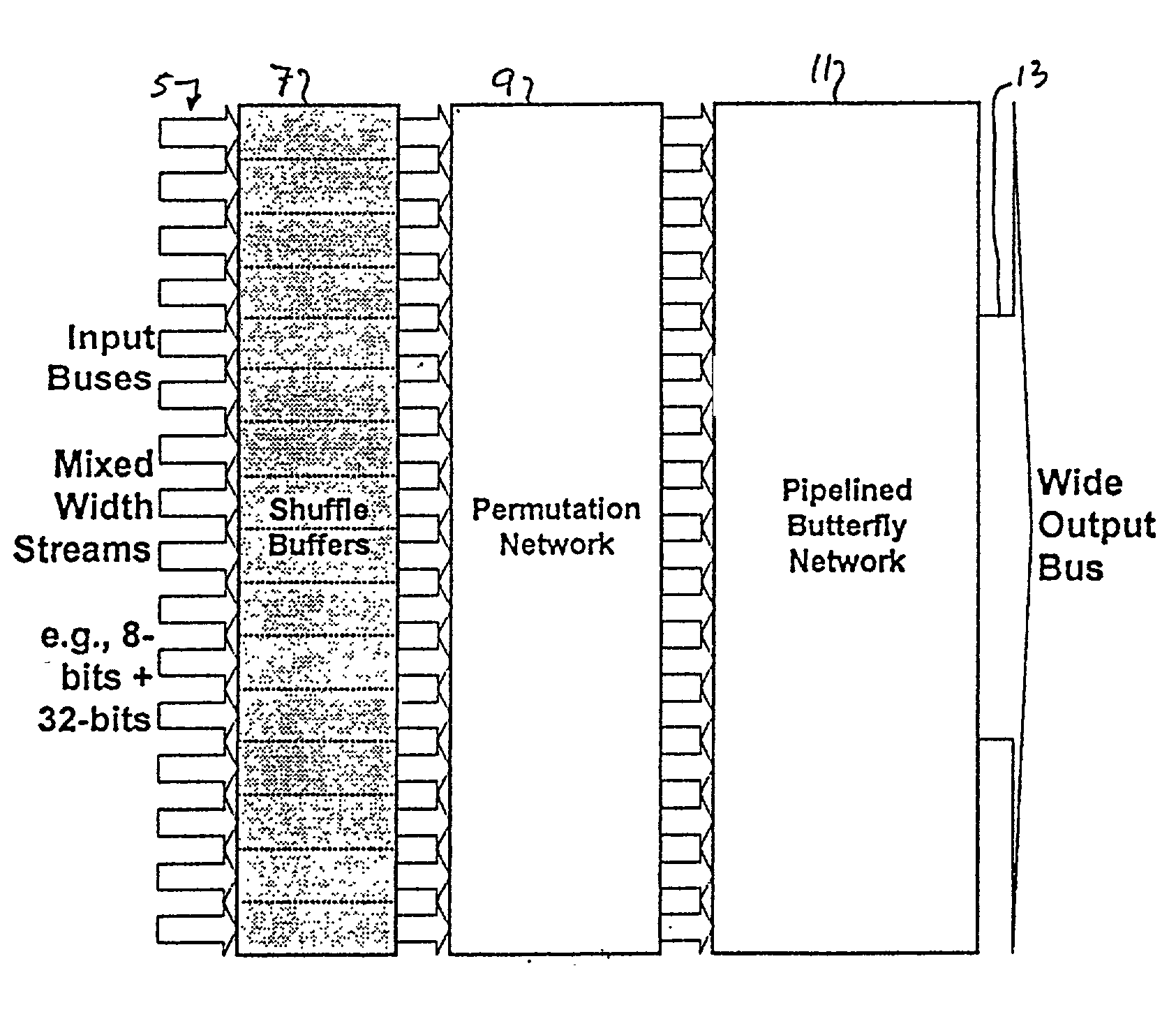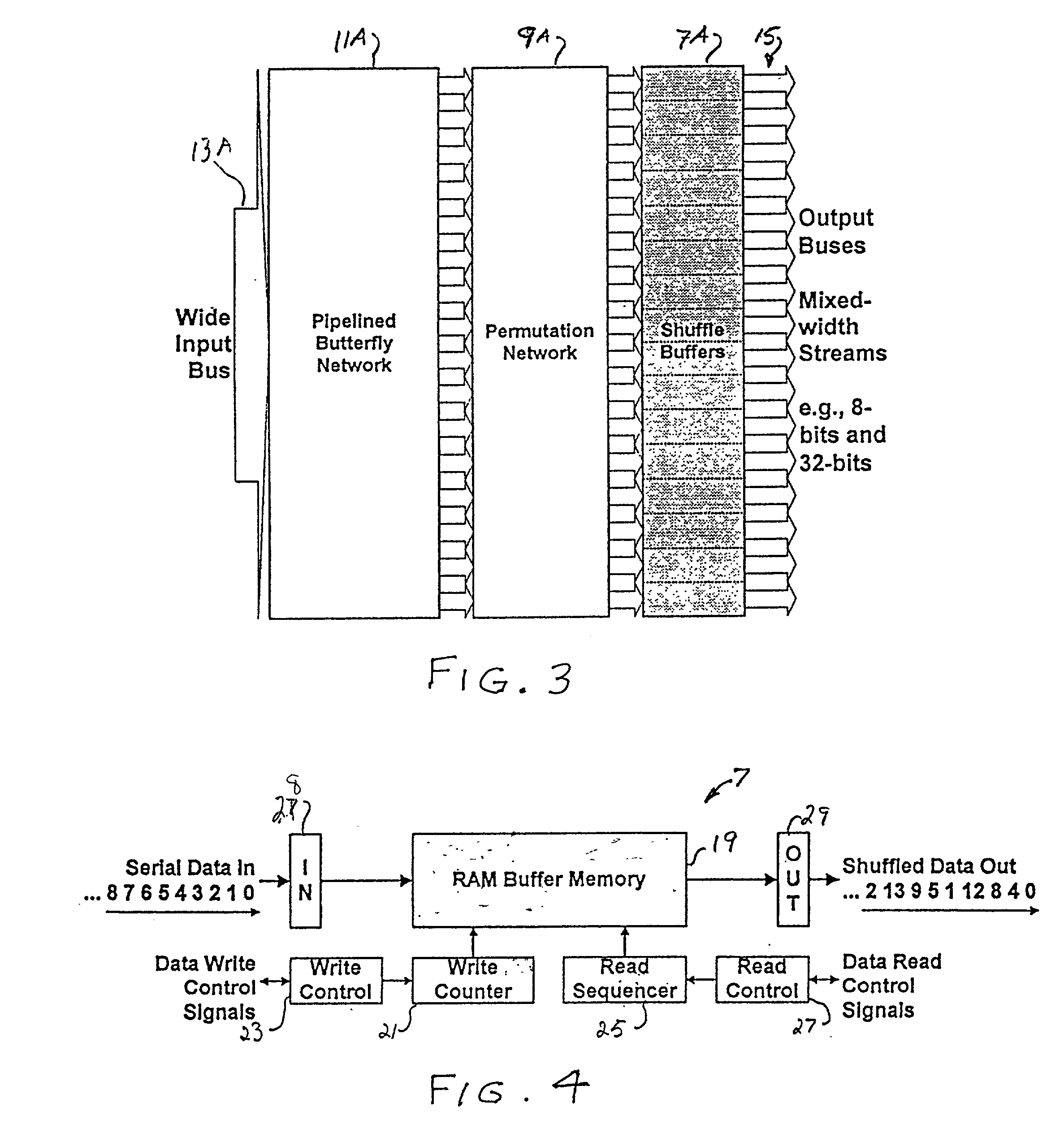Multi-stream merge network for data width conversion and multiplexing
a multi-stream merge and data width technology, applied in the field of multi-stream merge network for data width conversion and multiplexing, can solve the problems of large and expensive circuits that are not capable of running at high speeds, control complexity becomes substantial, logic and routing complexity increases, etc., and achieves the effect of less complexity of implementation logi
- Summary
- Abstract
- Description
- Claims
- Application Information
AI Technical Summary
Benefits of technology
Problems solved by technology
Method used
Image
Examples
Embodiment Construction
[0034] Turning to FIG. 2, a plurality of input buses 5 carry mixed width data streams, having the power of 2 relationship described above, i.e. the various widths of the input data streams are restricted to power of 2 multiples of each other.
[0035] The mixed width data streams are input to a shuffle buffer network 7 formed of a plurality of shuffle buffers. The shuffle buffer network accepts, buffers and reorders incoming data from the multiple different-data-width input buses, if required, as will be described later.
[0036] The output of the shuffle buffer system 7 is applied to a permutation network 9. The permutation network 9 rearranges the different data streams to create interleaved groups based on the input data width, again if necessary as will be described later.
[0037] The output of the permutation network 9 is applied to a pipelined butterfly network 11, which outputs its data to a wide output bus 13. The pipelined butterfly network performs the actual merging and data widt...
PUM
 Login to View More
Login to View More Abstract
Description
Claims
Application Information
 Login to View More
Login to View More - R&D
- Intellectual Property
- Life Sciences
- Materials
- Tech Scout
- Unparalleled Data Quality
- Higher Quality Content
- 60% Fewer Hallucinations
Browse by: Latest US Patents, China's latest patents, Technical Efficacy Thesaurus, Application Domain, Technology Topic, Popular Technical Reports.
© 2025 PatSnap. All rights reserved.Legal|Privacy policy|Modern Slavery Act Transparency Statement|Sitemap|About US| Contact US: help@patsnap.com



